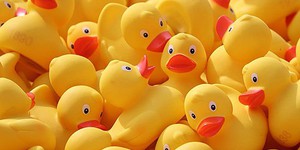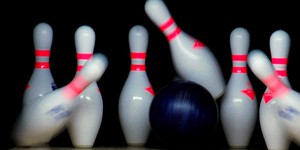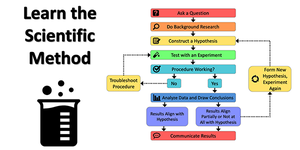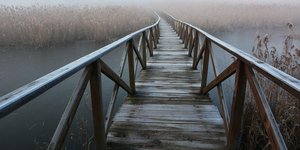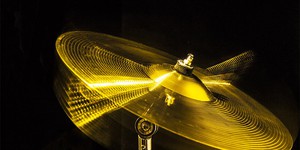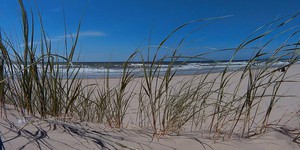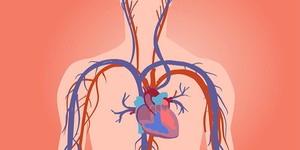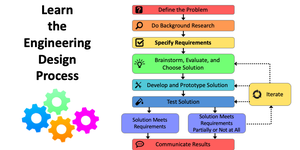Video Lessons (11 results)
Each Video Lesson asks a science question, teaches students about the relevant science, and then guides students in a hands-on activity that will help answer the question and demonstrate the science. Video Lessons are NGSS-aligned and bring core science concepts to life with storytelling, animation, and photos.
Educators can play Video Lessons for the entire class, set up stations students visit to do Video Lessons, or use Video Lessons with students who need additional support.
|
Select a resource
Sort by
|
Video Lesson
Grade: 6th-8th
8 reviews
Chemical reactions can result in interesting products! In this lesson, students learn how plastics are made by conducting a polymerization reaction in a simple milk-to-plastic transforming experiment. During their experiments, students will be able to compare the physical properties of their reactants (milk and vinegar) and their resulting organic casein polymer.
Read more
NGSS Performance Expectations:
Video Lesson
Grade: Kindergarten
8 reviews
Kindergarten students are used to moving objects. They throw balls, roll toy cars, and sweep the floor, but how much do they think about the forces behind these movements? In this fun hands-on lesson, students will use a game (rolling balls) to explore how pushing and pulling affects an object's motion.
Read more
NGSS Performance Expectations:
Video Lesson
Grade: 5th
2 reviews
New materials often involve chemical reactions, and slime is no exception.
In this lesson, students will use the engineering design process to design a slime product. They will need to decide on the desired properties for their slime and then experiment to find the best recipe.
Read more
NGSS Performance Expectations:
Video Lesson
Grade: 3rd-8th
7 reviews
This lesson will introduce students to the scientific method using a fun, hands-on activity about the role of animal camouflage in evolution. During the activity, students will practice each step of the scientific method including doing background research, making a hypothesis, conducting an experiment, analyzing data, and drawing conclusions. By going through this process, students will also learn how camouflage helps animals survive.
Read more
NGSS Performance Expectations:
Video Lesson
Grade: 2nd
1 review
Bridges are made of many different materials: steel, stone, wood and even rope. How do engineers decide which materials to use? In this activity, your students will learn about material properties, test the strength and flexibility of several materials, and use their test information to predict which material will result in the strongest bridge. They will test their hypotheses by buiding simple bridges from each material and determining which bridge can hold the most weight.
Read more
NGSS Performance Expectations:
Video Lesson
Grade: 1st
2 reviews
Students know that sounds can be heard, but do they know that some sounds can also be felt and seen? In this lesson, students will learn that vibration causes sound and build a fun musical instrument of their own.
Read more
NGSS Performance Expectations:
Video Lesson
Grade: 4th
2 reviews
In this lesson, students explore weathering—the wearing away of rock by exposure to the elements. They learn how it creates smooth boulders, rounded pebbles, sinkholes to swim in, and caves to explore. In the activity, they explore the connection between weathering and sand using sugar cubes.
Read more
NGSS Performance Expectations:
Video Lesson
Grade: 4th
5 reviews
In this lesson, students will learn about the circulatory system and build a simple model to investigate blood flow in different types of blood vessels.
Read more
NGSS Performance Expectations:
Video Lesson
Grade: 3rd-5th
1 review
In this fun video lesson, students will pretend to be engineers at an engineering company that constructs paper airplanes. They will identify the criteria for success from provided readings and define the constraints on their solutions. Using the engineering design process they will prototype, test, and deliver their best paper airplanes.
Read more
NGSS Performance Expectations:
Video Lesson
Grade: 6th-8th
2 reviews
Lightning is a powerful display of static electricity in nature. But what is static electricity? In this lesson, students will learn about static electricity and electric fields by building a device that can detect electrical charges, called an electroscope. They will use their electroscope to investigate how well different materials can build up electric charges by rubbing them against wool. During their experiments, students will be able to demonstrate how electric fields exert forces on…
Read more
NGSS Performance Expectations:
|
Explore Our Science Videos
Draw with a Pantograph - STEM Activity
Build A Vortex Cannon!
What Do Enzymes in Pineapple Juice Do to Milk?


